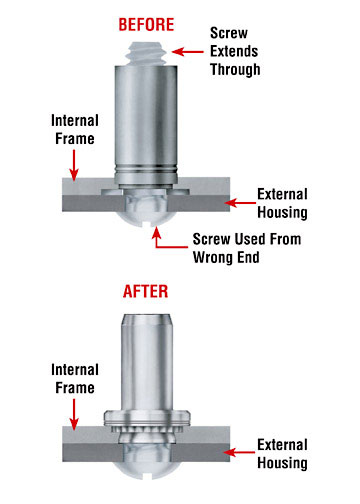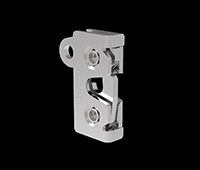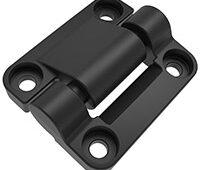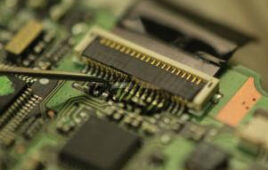Design innovations certainly owe much to advances in technology, evolving marketplace trends (such as smaller, thinner, and lighter), the particular or unique requirements of an application, and many other interrelated influences. Design engineers also play vital roles as innovators when they strive to attain a lower assembled cost for their designs, in effect achieving more with less. This is an especially critical objective in a challenging economic environment where manufacturers strive constantly to increase productivity and profitability without adversely affecting end-product integrity and quality.
When designers begin the task of decision-making methods to attach assemblies and components, the process sometimes can suggest a different and innovative approach that offers newfound benefits. For example, fastener parts count and costs might be reduced, perhaps assembly time and steps can be shortened, or a more reliable attachment can be realized.
While every application presents its own inherent challenges, there is no shortage of fastening solutions in the designer’s toolbox of technologies. The following expamles from Penn Engineering’s Casebook represent problems and unique solutions using a variety of different types of fasteners.
Newest Hot Technology
Problem: The mounting process for heat sinks typically involves loose hardware to handle, inventory, and install without the benefit of automated fastener insertion, which forces designers to confront a range of other issues. These include the need for predrilled or tapped holes, the possible protrusion of installed fasteners into the cooling fin side of a heat sink, and slug or scrap that results from the installation process. All these factors can degrade the goals of efficient heat sink design and economical assembly.
Solution: Surface Embedding Technology (SET) is a practical, proprietary fastening method developed by Penn Engineering, which solves some special heat-sink mounting problems. For one, the fasteners come in steel or stainless steel and mount permanently on only one side of the heat sink. By desin, no part of them can protrude into the opposite, “cooling” side. In addition, SET fasteners do not need predrilled or tapped holes, so metal chips and swarf are avoided. Their specifications can reduce or completely eliminate loose hardware (decreased parts count, weight, and production steps) and allow for automated fastener insertion, smaller packages, and more streamlined production down the line.
Problem: An LCD television manufacturer routinely specified an inexpensive through-headed standoff clinch fastener for a standard video electronics standards association (VESA) bracket to mount the TV to a homeowner’s wall. But, customers often short-circuited the TV when they mated the standoff with the long standard screws shipped with the wall-mount brackets.
Solution: To remedy this situation, designers specified a blind-type self-clinching nut instead of the open-ended standoff to eliminate potential risks and damage. The nut has a closed end, which prevents a mating screw from extending through and compromising sensitive surrounding electronics.
Problem: In another scenario, consider permanently joining two thin metal sheets face-to-face. You might opt to use a rivet, weld, adhesive, or tape. However, each of these methods has tradeoffs. While welding may seem a natural choice for joining two sheets of the same type of metal, it is impossible when joining dissimilar metals such as steel to aluminum. If the welded surface is intended to be the finished surface, then additional finishing steps are required to create an aesthetic surface.
Riveting can be effective for attaching dissimilar thin materials, but rivets cannot install flush with a finished surface. They leave unsightly metal bulges and so are typically used for assembly inside enclosures. You also have to pay attention to the clearance needed for the rivet bulb because it can take up valuable space.
Adhesives and tapes fulfill requirements for clean and flush attachments but they lack strength compared to other methods. Epoxies can be messy, double-sided tapes can be hard to handle, and tapes and adhesives may fail in harsh environments.
Solution: Consider a clinch fastener design that can perform multiple functions. The non-threaded fasteners permit two metal sections to be joined permanently and flush to create a smooth finish surface. You can marry two dissimilar metal types and sheets of unequal thickness or metal panels to plastic sheets. In addition, these fasteners perform as flush-mounted hinges or pivot points. The top sheet rotates around the fastener while the bottom sheet remains stationary.
Wired inside the box
Problem: Design can be tricky in the case of mounts to hold ties for wires or cables within enclosures or an electronic chassis. Plastic adhesive-mounted bases for these applications can fail over time. Snap-in or screw-mounted bases will likely require screws and more time to install. And, lances in sheets may allow electromagnetic interference (EMI) or radio frequency interference (RFI) contamination to get through the openings.

Two different metal panels can be joined permanently face-to-face using a non-threaded clinch fastener. It can also serve as a flush-mounted hinge or pivot point.
Solution: A family of self-clinching cable tie mounts and hooks can be a more practical approach to create permanent attachment points without screws or adhesives. Their locations and positions can be set during the design process to lay the way for wires and cables during final assembly.

A blind-type nut at bottom protects against potential intrusion by too-long screws unlike the open-end fastener at the top.

Permanent self-clinching cable tie mounts and hooks allow for wires to be bundled in specified locations without using screws or adhesives.
Ties are said to slide easily through the eye in mounts and hooks can be used to attach, remove, and return tie-bundled wires at mounting points when components need to be accessed for service or when wires or cables must be replaced. The hook feature allows ties to remain intact and wires to remain wrapped. Both types of hardware remain fixed and secure. The flush surface creates a smooth appearance.
Angling the right turn
Problem: You can use bent tables and relief slots, brackets and hardware, and/or welding to create right-angle designs. Each alternative, however, may have performance or production issues.
In electronic enclosures where EMI can be a concern, the holes created when bent tables are used can have a negative impact on the shielding. Where tabs are welded, an extra production step is forced and attendant plating/finish problems can occur. When right-angle brackets are used for mounting, additional hardware including attaching screws, washers, lock washers, and nuts are needed — slowing assembly and increasing parts inventories.
Solution: For these reasons, you might find other ways to create right-angle attachment points. For example, using clinch-type threaded and unthreaded fasteners suited for right-angle assemblies can eliminate the need for tab cutouts, brackets, welding, extra hardware, or secondary tapping operations.
A manufacturer’s two-piece enclosures that house electronics for sensitive balances benefited by using six aluminum unthreaded fasteners and compatible thread-forming screws to create right-angle attachment points. This configuration resulted in reducing the fastening hardware by half, slashing assembly time from 1-1/2-hr to 15-min, and eliminating two fabrication steps — punching and bending.

Multiple installed right-angle clinch fasteners and mating screws can be located throughout an enclosure to form right-angle attachment points.
In this case, the hardware was installed in the fabricated enclosures prior to final assembly and clinches permanently into the metal leaving the reverse side flush. Standard #6-32 thread-forming screws complete the attachment process. Thread-forming screws do not generate metal residue associated with thread-cutting screws and it is reported that they are preferred for use in electronic assemblies where metal chips cannot be tolerated.

Two steel surface-mount spacers permanently installed on a printed circuit board allow for spacing and securing a mother board to a daughter board.
Fastener fixes for multiple applications
Problem: A furniture manufacturer wanted to redesign adjustable-height desk legs to make them more ergonomic. Lack of space in the new design dictated the need for a shorter rear protrusion and shorter fastener thread lengths.
Solution: Self-clinching nuts with low profiles were permanently installed on the legs. The manufacturer claims this solution proved to be a reliable and cost-effective alternative to flow drilling.
Problem: A stair-climber assembly used 20 weld nuts and lock washers to prevent loosening from vibration when in service. Weld spatter issues caused problems, too.
Solution: Replacing the weld nuts with self-clinching locknuts provided torque resistance, eliminated spatter, and sped up end-product assembly.
Problem: A laser-leveling device incorporates a rotating laser beam. The laser is placed on a bracket that floats on springs to ensure that the laser beam is always horizontal. It performs as a gyro. Special weld nuts for mounting were causing problems in the assembly of the gyro, including misplaced studs, studs placed on an angle other than 90°, and weld spatter. All of these issues adversely affected the gyro’s function.
Solution: The manufacturer switched to self-clinching studs to replace the weld types which solved the problems and helped improve the assembly process.

Achieving more with less
Problem: Another manufacturer faced spacing and securing a mother board to a daughter board for optical fiber telecom equipment. The conventional method to secure both boards included significant amounts of loose hardware — four standard hexagonal pillars and eight sets of screw and washers. Assembly of these boards became slow and inefficient.
Solution: Designers analyzed the situation and specified steel surface-mount spacers to replace the loose hardware. They install permanently on printed circuit boards (PCBs) in the fashion as other surface mount components prior to the re-flow solder process. Their use reduced the risk of damage to boards and scrap that occurred when conventional fasteners were improperly installed with off-line equipment. This process reduced the number of loose parts and promoted faster assembly by eliminating secondary operations.
In this application, hardware was reduced by 50% and cost reductions by more than 50% compared with manual assembly. Also, the boards are now handled less which, reportedly, improved overall product reliability.
PennEngineering
www.pemnet.com
Filed Under: Screws • nuts • bolts, FASTENING • JOINING • locks • latches • pins





Tell Us What You Think!